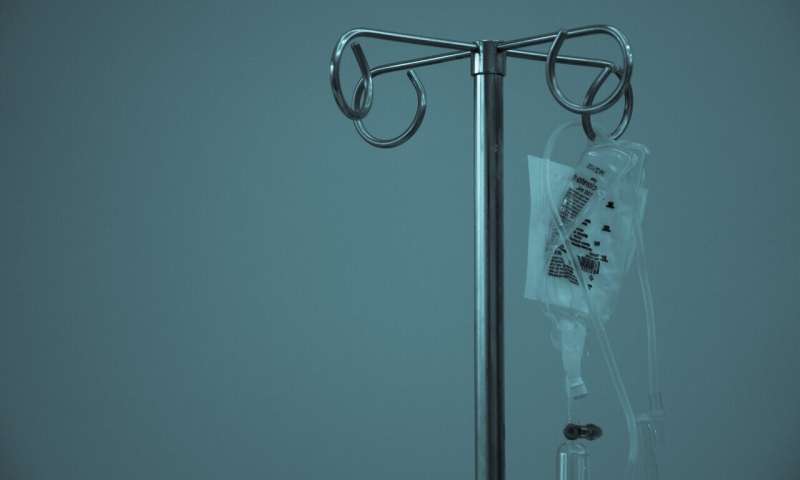Home » Health News »
Hospital COVID-19 risk lowest among intensive care staff

Contrary to expectations, the risk of COVID-19 infection among hospital staff at the height of the coronavirus pandemic was lowest among intensive care clinicians, reveals a study of one major UK medical centre, published in the journal Thorax.
Infection risk was highest among cleaners, acute and general medicine clinicians, and those of Black, Asian and Minority Ethnic (BAME) backgrounds at University Hospitals Birmingham NHS Foundation Trust (UHBFT).
The findings prompt the researchers to suggest that the type of personal protective equipment (PPE) worn may be key to these differences, which are likely to be relevant for any second surge in COVID-19 and/or seasonal flu this winter.
UHBFT is one of the largest hospital trusts in the UK, with over 20,000 employees caring for 2.2 million people every year. As lead study author Professor Alex Richter explains in a linked podcast, at the height of the pandemic, 5 patients with serious COVID-19 infection were being admitted every hour.
At the time, there was no national NHS staff testing capacity, so no way of knowing who was infected, and therefore at risk of passing it on to patients, or who had already had the infection. “You’ve got to remember that we are all key workers, so travelling on public transport, and out and about,” she says.
To find out, she offered to test staff with no COVID-19 symptoms for both current (throat and nose swabs to detect antigen) and previous (blood test to detect antibodies) infection. “I’ve never recruited to a study so fast in my life. We recruited 545 staff in 20 hours,” she comments.
All the staff were at work over the course of 24 hours between 24 and 25 April 2020, around a month after the UK went into lock down. They were asked to report any illnesses consistent with COVID-19 that they had had in the previous 4 months. Information on ethnicity and department of work was also collected.
Nearly 2.5% (13 out of 545) staff with no symptoms tested positive for SARS-CoV-2, the virus responsible for COVID-19 infection. Of these, 38% (5) subsequently developed COVID-19 symptoms.
Around 1 in 4 (26%; 136) of the 516 for whom serum samples were available said they had previously had symptoms consistent with COVID-19 infection.
Staff with previous symptoms were significantly more likely to have antibodies than those who hadn’t had symptoms: 37% (of 136 staff) vs 17% (of 281 staff). And they had higher levels of antibodies.
The overall prevalence of antibody positivity (seroprevalence) was 24% (126/ 516): this compares with 6% generally in the Midlands at the time.
When the researchers looked at the figures by staff area, striking differences in antibody positivity emerged.
Cleaners had the highest seroprevalence (34.5%; 10/29), followed by clinicians working in acute medicine (33%; 10/30) or general internal medicine (30%; 30/99). The lowest seroprevalence was found among staff working in intensive care medicine (15%; 9/61), emergency medicine (13%; 2/15), and general surgery (13%; 3/23).
There was also an ethnic divide: workers of BAME backgrounds were nearly twice as likely to have already had the infection as their White colleagues.
“We presumed intensive care workers would be at highest risk.. But workers in ITU are relatively well protected compared with other areas,” explains Professor Richter.
“The reasons underlying this are likely to be multifactorial: in accordance with national guidelines, intensive care units were designated high-risk environments and the use of enhanced personal protective equipment (PPE) including filtered face piece (class 3) respirators mandated. In contrast, fluid-resistant surgical masks were recommended in other clinical areas,” note the researchers.
This is an observational study, and not all participants provided all the information requested. Nor is it known whether symptomless infection among staff puts hospital patients at risk.
“However, our data would support the assessment of widespread healthcare worker testing, including track and trace, on viral transmission during future waves of a pandemic,” conclude the researchers.
“All these factors are important for considering what’s going to happen this winter,” suggests Professor Richter. “Cases [of coronavirus] are on the rise. Are we going to have another surge? If there is one, how do we protect healthcare workers this winter?” she asks.
Source: Read Full Article


